
Snow gums, Gorges & Blue Waterholes | 4-Day Alpine Traverse
📍 Mt Bimberi, ACT | Guided | All Inclusive ✅
Trek across quiet Australian Alps country to the ACT’s rooftop—Mt Bimberi—then drop into Blue Waterholes to explore limestone caves and turquoise gorges
Canberra > Canberra
Moderate
Camping
200% CO₂ Offset
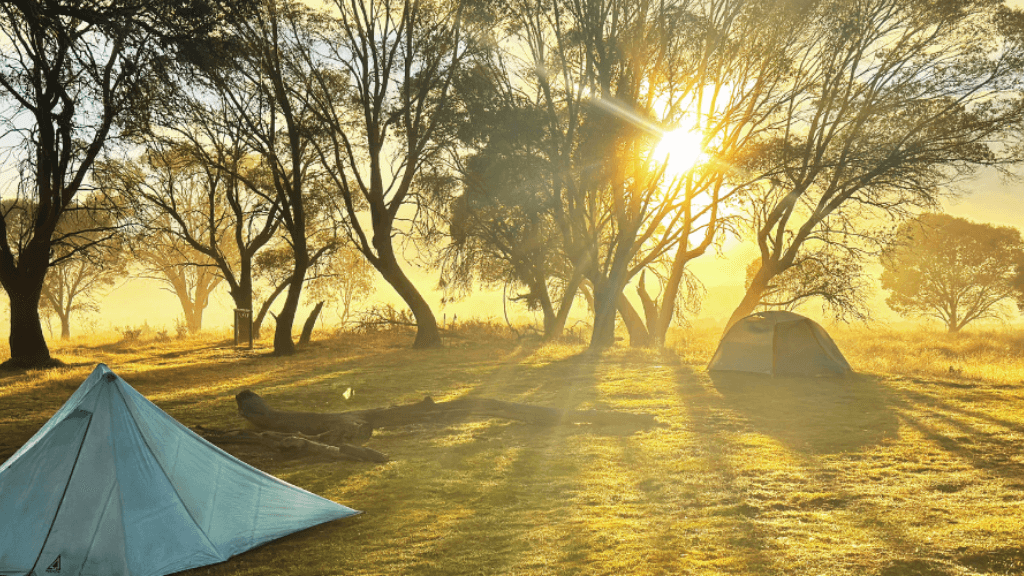
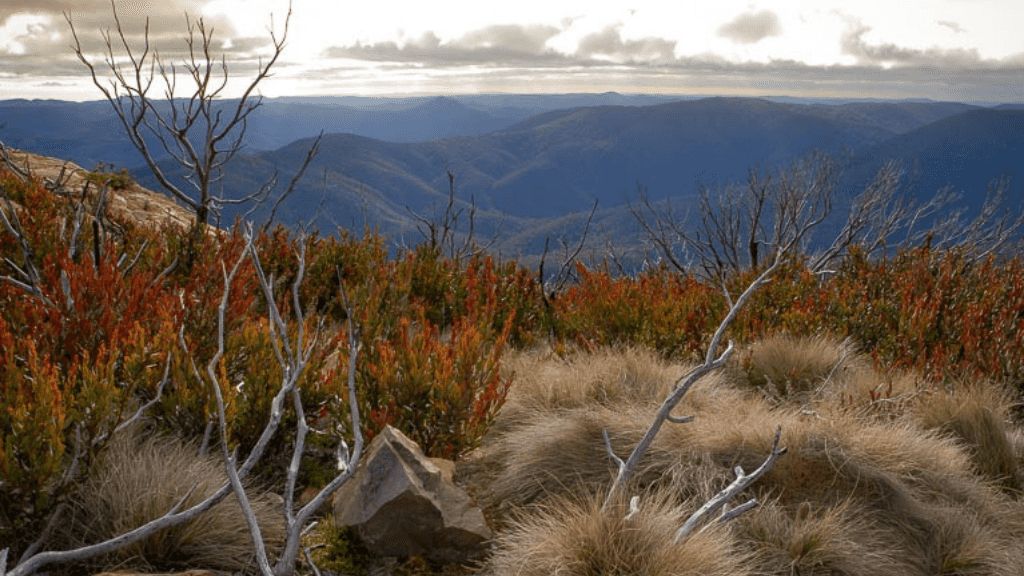
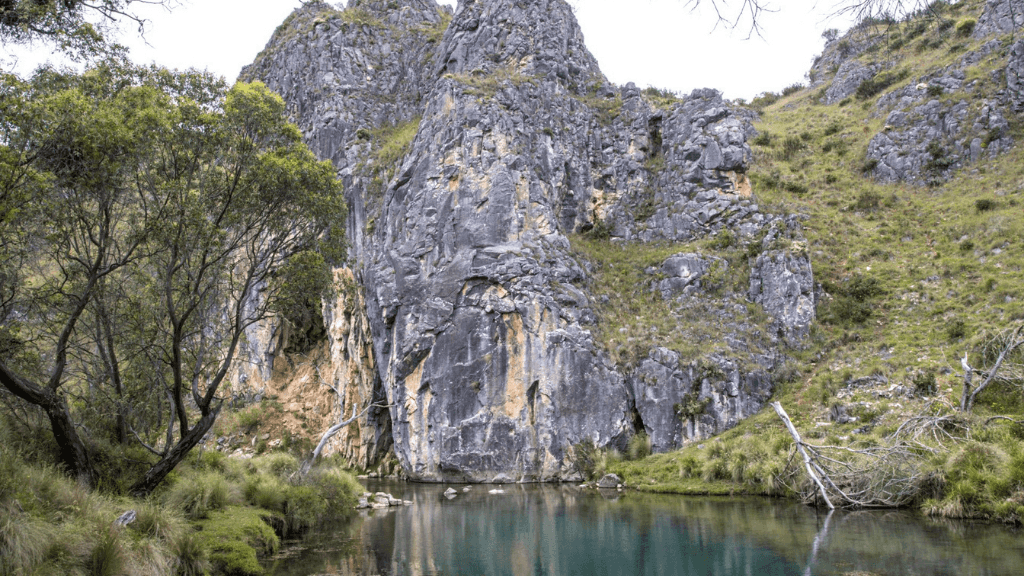
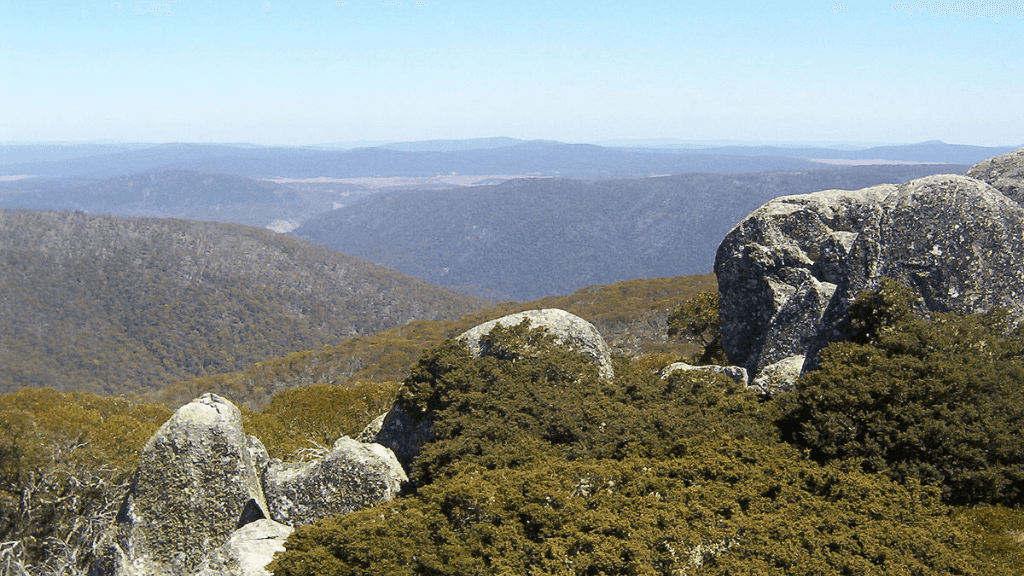
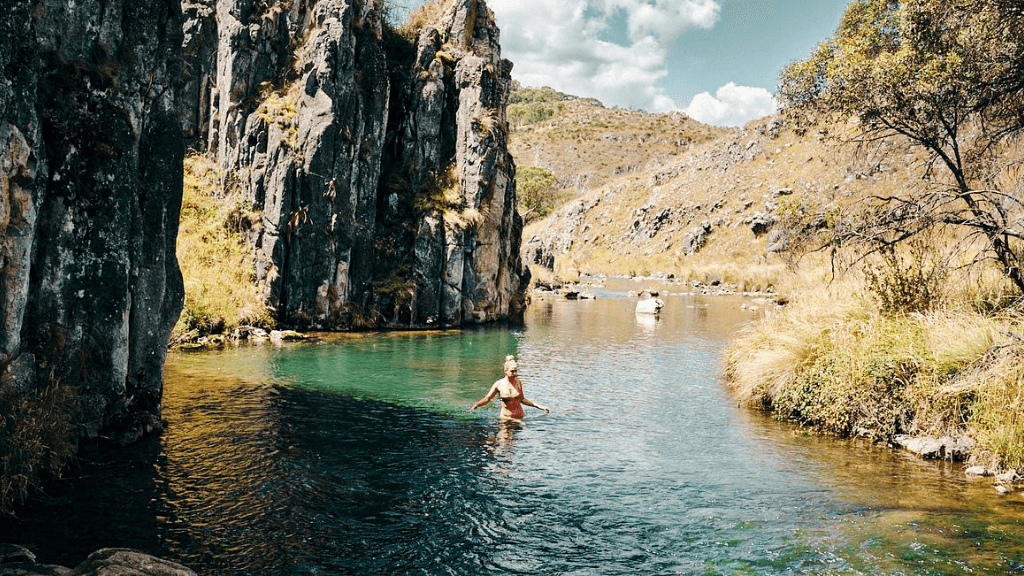





























Tour Overview
Cross quiet Australian Alps country to the ACT’s rooftop—Mt Bimberi—then descend into Blue Waterholes for turquoise gorges, shallow wades, and limestone caves capped by Cooleman Falls.
Expect snow gums, open high plains, historic huts and wildlife in numbers. This is a classic, tent-based pack trek: small group, steady pace, big landscapes, and time for a cheeky cold-water dip if you’re game.
Remote, raw, and wildly rewarding—perfect for hikers who love a bit of everything: summits, rivers, caves, and starry nights.
Quick Facts
-
Duration: 4 days
-
Style: Guided pack-carry; tent-based; small group
-
Difficulty: Moderate; mixed terrain with some wading and an optional summit
-
Start/Finish: Canberra region (Alps traverse to Blue Waterholes)
-
Transport: Return road transfers included
-
Stays: National park tent camps (3 nights)
Trip Highlights
-
Optional summit of Mt Bimberi, highest point in the ACT, with sweeping alpine views
-
Wade through Clarke & Nichols gorges and explore easy-access limestone caves
-
Cool off at Cooleman Falls; picnic by turquoise pools
-
Ramble past historic alpine huts and across wildlife-rich high plains
-
Classic Australian Alps scenery: snow gums, granite tors, big skies
Good to Know
-
Expect wet-feet creek crossings and some optional short cave sections (torch provided)
-
Nights can be cold at altitude year-round—extra socks advised!
-
Pack weight is shared across group gear; personal loads still require solid hiking fitness

Open | Live Availability
Tour Itinerary
Day 0 - Pre-Trip Meetup — Canberra, 2:00 pm
Gear issue and fit-out (tent, bag, pack, etc.), final clothing check, trip briefing. Start dialled; hike happier.
Day 1 | Orroral Valley → Cotter Hut
Distance: 17.5 km Time: 5–6 hrs Grade: Moderate
From Canberra, roll to Orroral Homestead (≈1 hr) and the Orroral Tracking Station—a 1960s NASA outpost—where the walk begins. Cross Orroral Valley (kangaroos aplenty), then climb into eucalypt forest.
Banksias and silver wattle line the mix of singletrack and fire trail up to Cotter Gap; granite tors and alpine flats set the scene before a gentle descent to Cotter Flat for a riverside camp under wide, starry skies.
Day 2 | Cotter Flat → Oldfields Hut (with optional Mt Bimberi)
Distance: 11.2 km (add 6 km for summit) Time: 6–8 hrs (add 2–3 hrs for summit) Grade: Moderate–Hard (if summiting)
Skirt Cotter Hut and climb steadily to Murrays Gap, passing high-country bogs and fens. Drop packs to tag Mt Bimberi—highest point in the ACT—via a faint footpad weaving through snow gums and granite.
Summit views sweep across the Brindabellas (on a clear day, even Telstra Tower glints on the horizon). Rejoin packs, cross into NSW, and descend to Oldfields Hut (1925) for a classic Alps camp.
Day 3 | Oldfields Hut → Bill Jones Hut
Distance: 15.6 km Time: 5–6 hrs Grade: Moderate
Open walking towards Currango Plain, with a detour option to Pockets Hut. Angle off-track beneath Howells Peak across wide tussock fields and big-sky country, then explore Old Currango Homestead (1873)—the oldest hut in Kosciuszko National Park.
Undulating fire trail leads on to Bill Jones Hut and a quiet camp that sets up tomorrow’s karst finale.
Day 4 | Bill Jones Hut → Blue Waterholes → Canberra
Distance: 8.8 km (plus short cave forays) Time: 3–4 hrs Grade: Moderate (wet-feet)
Cut across to Nichols Gorge Walk into limestone country. Explore Murray Cave (to ~200 m, ending at a water-filled siphon) and Cooleman Cave (also to ~200 m). Follow Clarke Gorge with ankle-to-knee-deep creek crossings and turquoise pools, then finish at Cooleman Falls—prime for a brisk dip.
Pack down, then road transfer back to Canberra. Trail-dusted, soul-full, job done.
Key Tour Info
Food & Accommodation
💤 Where You’ll Sleep
- Night 1 — Cotter Flat: Grassy riverside flats below granite tors; abundant wildlife and stellar night skies.
- Night 2 — Oldfields Hut area: Classic high-country camp near the 1925 hut; open plains, snow gums, big horizons.
- Night 3 — Bill Jones Hut area: Quiet valley setting that positions the group for the finale into Blue Waterholes.
Facilities & Conditions
- Remote national-park standards: some drop toilets nearby; no showers; creek/stream water treated at camp.
- Limited to no mobile reception; bright Milky Way overhead and early nights by design.
- Camps comply with park regulations (e.g., required distance from huts and waterways).
🍽️ What You’ll Eat
Meals are designed for energy, recovery and taste, with locally freeze-dried components (better texture and nutrient retention than standard dehydrated fare). Portions are generous; snacks are frequent.
Breakfasts (hot):
- Oats with mixed nuts, dried fruit, chia and maple
- Breakfast burrito: eggs/beans/spinach/cheese + salsa in a soft wrap
- Buckwheat pancakes with cacao-hazelnut spread and walnuts
Trail Lunches:
- Shepherd’s pie cups (beef or TVP), peas, silky mash
- Wholemeal wraps: smashed avo, chicken or tofu, sun-dried tomatoes, cheddar
- Trail “nachos”: spiced beans/mince, corn, avo, cheese + crispy corn chips
Dinners (hot):
- Quinoa with chicken or tofu in rich peanut satay
- Spaghetti bolognese with mushrooms & sundried tomatoes, cheese on top
- Spiced chicken & risoni in a creamy coconut sauce
Desserts:
- Coffee-choc tiramisu with wafer crunch
- Freeze-dried ice-cream treats (Golden-Gaytime vibes included)
- Warm cinnamon apples with buttery crumble
Snacks & Hot Drinks (on tap):
- The good stuff: chocolate (trail gold), lollies, nuts, dried fruit, muesli bars, chips, pretzels
- Coffee, milk powder, Milo, black/green tea, lemon & ginger tea
Dietaries: Most needs can be accommodated with notice (vegetarian, vegan, lactose-free, gluten-free/coeliac, and common allergies).
What's Included & What's Not
✅ What’s Included
Itinerary & Activities
- 4-day guided pack trek across the Alps: Orroral Valley → Cotter Gap → Oldfields Hut → Bill Jones Hut → Blue Waterholes
- Optional Mt Bimberi summit (ACT high point)
- Gorge and cave exploring at Blue Waterholes with shallow creek wades and swim spots
Guides & Safety
- Two experienced wilderness guides (max group 8 → guest-to-guide 4:1)
- Daily briefings, tailored pacing, group first-aid + emergency comms
Accommodation
- 3 nights remote national-park tent camps (scenic, low-impact sites)
- Camps selected to meet park regulations (e.g., setbacks from huts/waterways)
Meals & Drinks
- Hot breakfasts & dinners, plus trail lunches, snacks, and hot drinks throughout
- Excludes breakfast on Day 1 and dinner on Day 4
- Dietaries supported on request (vegetarian, vegan, lactose-free, gluten-free/coeliac, common allergies)
Transport
- Return road transfers Canberra ⇄ trailheads
Equipment & Support
- Modern, lightweight backcountry kit supplied (typical issued gear ~4.5 kg)
- Target pack weight under 10 kg for most of the trip (varies with personal items)
- Typical issue includes: quality hiking pack, 2-person tent, warm sleeping bag + liner, insulated mat, cook set, water treatment, (~, 10,000 mAh power bank (~150 g)
- Sunscreen, insect repellent, hand sanitiser, earplugs and toothpaste
- Pre-tour preparation pack (gear checklist, clothing guidance, route notes)
🚫 What’s Not Included
- Breakfast on Day 1; dinner on Day 4
- Personal hiking apparel and footwear
- Travel insurance
- Personal extras
- Any costs arising from itinerary changes due to weather, access, or safety decisions
Weather Expectations
Seasonal Weather Expectations
Altitude range: ~900 m (Orroral Valley) to 1,913 m (Mt Bimberi); Blue Waterholes/Cooleman Plain sits ~1,200–1,300 m. Mountain weather changes fast—pack the beanie even in January; the Alps don’t read calendars.
Summer (Dec–Feb)
- Day: 18–28 °C (heat spikes possible) · Night: 5–12 °C
- Conditions: Strong UV, occasional afternoon thunderstorms, dry trails with dusty sections.
- On-trail impact: Warm, breathable layers + full sun protection; carry extra water. Short, sharp storm cells can roll through—light shell handy.
Autumn (Mar–May)
- Day: 10–20 °C · Night: 0–8 °C (early frosts)
- Conditions: Stable, clear days; crisp mornings; first snow flurries possible late autumn at elevation.
- On-trail impact: Prime hiking window—great visibility and cooler climbs. Warmer socks required.
Spring (Sep–Nov)
- Day: 8–18 °C · Night: −3–6 °C
- Conditions: Highly variable—late snow patches, snowmelt-swollen creeks, boggy tussock in places; stronger winds.
- On-trail impact: Wildflowers and clearer skies build through late spring.
Year-Round Notes
- Creek wades & caves: Water at Blue Waterholes stays cold year-round; expect ankle-to-knee-deep crossings and chilly dips.
- Wind & exposure: Ridges and gaps (e.g., Cotter Gap, Bimberi summit) amplify wind—add a windproof layer even on mild forecasts.
- Fire & smoke (summer): Hot, windy days can raise fire danger and reduce air quality. Itineraries may adjust accordingly.
- Frost & condensation: Common outside of high summer—air the tent when possible.
Best all-round windows: Late Oct–Dec and Mar–May for balanced temps, clearer days, and manageable creek levels.
⭐ Reviews
Field Notes From Fellow Travelers
Verified Reviews from Past Tours
We had a fantastic time on two trips with Autopia Tours. Four days on the Larapinta Trail and a three day Uluru/Kata Tjuta/Kings Canyon trip.
The hosts and guides Vic, the two Zoe’s, Ben, Sue and Connie were welcoming, friendly and a credit to the business.
My only gripe would be that there were no larger sized swags for taller people. Highly recommended.
Juan Bradey
May, 2024
Tristan and Zoe were superlative guides. I cannot speak highly enough of them. They were caring, extremely capable and sensitive to individual needs.
They were very informative and respectful. of the culture and experience. . As well they were fun and engaging. They brought the very bast out of the fantastic group of women on the trek.
Cheryl Crosthwait
March, 2023
This review goes out to a pair of epic guides! (Tristan and Zoe) So so so accommodating and kind, taking our group in an awesome journey through the Larapinta.
Cliapatra
March, 2025
I was incredibly impressed with the three young women who led our tour along the Larapinta Trail in August 2023, Immy, Ell, and Shiarna. They were always upbeat, cheerful, exceptional cooks, and extremely fit and hard working.
After a day trekking, they would cook, set up dinner, unpack truck, clean up, get ready for the next day, be up early the next morning, offering coffee, etc. Immy had exceptional knowledge about the local flora, fauna, and indigenous peoples. She offered opportunities to walk on our own, sit on our own, encouraging us to reflect.
As someone who does yoga and meditation, I found this absolutely beautiful and perfect for me. It gave time to pause, reflect, I was able to leave work thoughts behind, focus on the present, and felt all round healthier, relaxed, calm and focused. This was completely unexpected and I hadn't thought so much attention would be focused on us in this way.
It was absolutely perfect for a group of people raising funds for women's cancer research, which is so often neglected, that we had three inspiring and strong women leading our group. Thank you so much to your company for the excellent guides who worked around the clock to make sure we were safe, healthy, fed and watered to a very high standard.
A special call out to Immy, who is to be commended for her leadership, thoughtful guiding, and wonderful poetry.
Michelle Henderson
May, 2025
We trekked section 1, 10 and 12 of the Larapinta Trail to raise awareness and funds for Women's rights to a second chance of education.
Tour guides Zoe and Tristan were amazing and had such a wonderful dynamic between the both of them, making the tour enjoyable and amazing.
The support they both offered each day and encouragement on all the trails was appreciated by everyone.
Courtney Millen
August, 2024
I took the four day Larapinta trip with Zoe, Coni and Keegan last week. It was amazing and they were absolute gems. Cannot recommend this trip enough.
Jaquci Mumford
May, 2025
Field Notes From Fellow Travelers
Verified Reviews from Past Tours
What To Pack
What to pack
Dialled for alpine variety, creek wades, and cool nights. Keep it light, layer smart, and plan for wet feet near Blue Waterholes.
Essentials
- Daypack/liner system: Main pack, daypack, and pack liner are supplied—no extras needed.
- Water capacity: 2–3 L total (bottles or a bladder).
- Headwear & eyewear: Wide-brim hat, category 3 sunglasses, SPF lip balm.
- Navigation/ID: Phone, ID/Medicare card, travel insurance details (digital + backup).
- Small wallet kit: Cash/card for post-trip snacks.
Clothing — On Trail (no cotton)
- Base layers: 1–2 merino/synthetic tees; long-sleeve sun shirt compulsory.
- Mid layer: Fleece or light puffy.
- Shell: Waterproof breathable jacket (taped seams); rain pants compulsory.
- Bottoms: Hiking pants or shorts plus fleece or synthetic pants for cold snaps.
- Socks: 2–3 pairs hiking socks (synthetic blend); keep 1 pair dry for camp.
- Gloves & beanie: Even in summer—alpine wind has opinions.
Clothing — Camp & Sleep
- Warm layer: Insulated jacket (synthetic or down).
- Camp comfort: Warm socks + camp pants/leggings.
Footwear
- Primary: Lightweight trail runners or hiking boots (already broken in).
- Creek option: Strap-on sandals/aqua shoes for repeated shallow crossings (optional), or accept wet shoes and carry extra socks.
Personal Health & Toiletries
- Personal medication.
- Toothbrush and optional wet wipes (waste to be carried out).
- Sleep mask (light nights, lively wildlife); earplugs provided.
Nice-to-Haves (Optional)
- Trail running gaiters: Handy for keeping socks clean and small rocks out of shoes.
- 5–10 L dry bags to segment clothing/sleep kit.
- Compact camera or action cam + spare battery.
- Lightweight book/Kindle, tiny notebook & pen.
- Microfibre towel & swimwear (for brave dips at Cooleman Falls).
- Camp shoes: Lightweight slip-ons or sandals.
Seasonal Add-Ons
- Summer: Extra electrolytes, sun sleeves, buff, quick-dry shorts.
- Autumn/Spring: Warmer gloves, thicker mid layer; gaiters strongly recommended.
- Winter: Heavier puffy, insulated gloves, thicker beanie, warmer sleep layers.
Blue Waterholes & Caves Notes
- Expect ankle-to-knee-deep creek wades—keep a dry-sock strategy.
- Limestone caves are cool year-round; a light fleece and beanie make them far more pleasant.
- Headtorch supplied for straightforward cave sections.
Food & Water
- All meals, snacks, and hot drinks are provided on-trip (except breakfast Day 1 and dinner Day 4).
- Bring favourite supplementary snacks if picky or allergy-specific.
- Carry 2–3 L water capacity; guides advise on refill points.
Packing Tips
- Layer, don’t lug: The Alps change mood fast; build warmth with layers.
- Wet–dry system: Keep one full outfit bone-dry for camp.
- Waterproof everything: Liner + dry bags = happy sleeper.
- Weight target: With supplied lightweight kit, a total carry under ~10 kg is realistic for most hikers.
Provided On-Tour (No need to pack)
Quality hiking pack, daypack, pack liner, tent, sleeping bag + liner, inflatable mat, group cook system & water treatment, headtorch, 10,000 mAh power bank, inflatable pillow, poncho, sit mat, and safety comms/first-aid.
Local Insights
Local Insights — Mt Bimberi & Blue Waterholes (High Plains, Kosciuszko NP / Namadgi)
Travel across Ngarigo, Walgalu and Ngunnawal Country in the northern Snowy Mountains and ACT high country. Culture leads—follow all on-Country guidance and signage.
Big-picture snapshot
A compact alpine-karst combo: turquoise limestone pools and slot gorges at Blue Waterholes on the Cooleman Plain, plus the ACT’s highest summit on the skyline—Mt Bimberi—reached via open plains, historic huts, and a final off-track spur. Expect remote feel and no reception.
Seasons & access (what actually changes)
- Roads: Long Plain Road and Tantangara Road (beyond the dam wall) are closed from the June to October long weekends (dates vary by conditions). Outside that window, unsealed roads can become boggy after rain.
- Walking windows: Clarke Gorge and Nichols Gorge generally open from the October to June long weekends, with closures possible for weather, fire or management.
- Temperature swing: Crisp nights even in summer; winter brings snow on the ranges and ice-cold creek crossings. Layer like you mean it.
Culture & conduct (essential respect)
- Caves are cultural and ecological places. Only publicly open caves may be entered without special consent; others require NPWS cave access permission.
- Drones: Not permitted in Namadgi National Park and approval required in NSW parks.
- Walk softly—stay on formed pads, don’t touch rock art or speleothems, and leave natural objects where they are.
Passes, permits & bookings
- High Plains (Kosciuszko NP): Vehicle entry fee applies, and some campgrounds may require booking ahead of time; Blue Waterholes has no camping fee (booking fee applies).
- Cave access: Public access to signposted caves (e.g., Cooleman, Right Cooleman, Murray, Barbers) is allowed; deeper or other caves need consent/permits.
- Namadgi / Bimberi side: Drones prohibited; check track/road status with Parks ACT before aiming for the summit route.
Trails & highlights (how to choose)
Blue Waterholes (Kosciuszko NP — High Plains area)
- Clarke Gorge walking track (5 km return, Grade 5): Narrow limestone gorge with multiple creek crossings and a finish at Cooleman Falls (~15 m drop). Slippery rock, wading—water-friendly footwear pays off.
- Nichols Gorge walking track (7 km loop, Grade 4): A drier, karst-rich loop past cave entrances and fossil-peppered creek beds; headlamp and warm layer useful for short cave forays.
- Coolamine Homestead precinct: A photogenic 1890s pastoral outpost—pair with a dusk wander for plains-and-snow-gums mood.
Mt Bimberi (ACT high point, via Murray’s Gap)
Common start is the Pockets Saddle Road gate → Oldfields Hut → Murray’s Gap fire trail; the final spur to the summit is unmarked and requires navigation on a rough footpad. Treat it as an experienced walker objective with a full day and a PLB.
Water, safety & navigation
- Creek crossings are the point. Expect wet feet and swift-changing conditions after rain; don’t enter flood flows.
- Treat all water.
- Carry a PLB/satellite communicator and offline maps; assume no reception.
- Alpine weather rules apply: Wind chill bites on open ridgelines like Bimberi even after hot days on the plains.
Recommendations & local-style tips
- Footwear swap: Pack light sandals/reef shoes for Clarke Gorge crossings; keep grippy shoes for rocky ledges.
- Headlamps, not phone torches: Caves are cold and damp—use a real light and don’t push beyond signed public zones.
- Homestead + huts circuit: Stitch Coolamine Homestead with Oldfields Hut for social history alongside geology.
- Shoulder-season magic: Late October and late March often deliver clear water, quieter trails and mild days—but still check closures.
- Starfields: Minimal light pollution—bring a warm layer and linger after sunset on the plains.
- Zero-trace mindset: Karst systems are fragile; keep soap, food scraps and sediment out of water, and stick to pads to protect cryptobiotic soils.
Zero Trace (do it right)
Pack out everything, keep ≥50 m from fragile springs and cave entrances when camping, respect seasonal/cultural closures, and give wildlife space. The goal is simple: leave it feeling untouched.
CO₂ Footprint Report
CO₂e Report — Mt Bimberi Summit & Blue Waterholes (4 Days)
Results Summary (Topline)
- Estimated total per guest: ~234 kg CO₂e
- Estimated total per tour (8 guests): ~1.87 t CO₂e
- Offset applied at 200%: ~468 kg CO₂e per guest (tour total ~3.75 t CO₂e)
- Method note: High-estimate approach with WTT (well-to-tank) and RF = 1.9 for aviation where used; includes single-origin guest travel, all meals (on- and off-tour), on-trip transfers, and a +10% uncertainty uplift. No wildlife boat day assumed for this itinerary (not applicable).
Purpose
Provide a transparent, decision-grade CO₂e estimate for guest participation in the Mt Bimberi Summit & Blue Waterholes 4-day trek, suitable for display and 200% offsetting.
Key Tour Info
- Duration: 4 days (3 nights camping)
- Route: Orroral Valley → Cotter Gap → Oldfields Hut → Bill Jones Hut → Blue Waterholes → Canberra return
- Distance: ~52 km on foot (+6 km optional Mt Bimberi)
- Group size (assumed for tour total): 8 guests
- Start/Finish: Canberra (ACT)
Scope & Boundaries
Included
- Feeder travel (guest): Single-origin hub Sydney → Canberra → Sydney (return, economy flight).
- On-trip transport: Mini-coach transfers (Canberra ⇄ trailheads; internal shuttles).
- Accommodation: 3 nights national-park camping (direct operational emissions negligible).
- Food: All meals for trip duration using a per-meal factor (includes off-tour breakfast Day 1 and dinner Day 4).
- Cooking fuel & consumables: Small LPG allocation per guest.
- Uncertainty uplift: +10% applied to subtotal.
Excluded
- Non-itinerary personal travel/shopping, personal gear purchases, guide/staff travel, capital goods, and land-use change. No commercial hotel nights.
Emission Factors & Conservative Defaults
- Short-haul flight (incl. WTT, RF = 1.9): 0.30 kg CO₂e / p-km
- Mini-coach / bus (higher bus factor, incl. WTT): 0.105 kg CO₂e / p-km
- Meals (mixed diet, conservative): 1.7 kg CO₂e / meal
- Cooking fuel (camp stoves): 0.5 kg CO₂e / guest (trip total)
Activity Data (Per Guest)
- Feeder flight distance: Sydney ↔ Canberra ~500 km return
- On-trip road distance (passenger-km): ~400 km
- Meals counted: 12 total (10 on-tour + 2 off-tour)
- Camping nights: 3
Results — Per Guest
- Feeder travel (return flight SYD↔CBR): 500 km × 0.30 = 150.0 kg
- On-trip mini-coach (~400 km): 400 × 0.105 = 42.0 kg
- Meals (12 × 1.7 kg): 20.4 kg
- Stove fuel & consumables: 0.5 kg
- Subtotal: 212.9 kg
- +10% uncertainty uplift: 21.3 kg
= Estimated total per guest: ~234 kg CO₂e
(Share of subtotal by source: Feeder travel ~70%, On-trip transport ~20%, Meals ~10%, Other <1%.)
Results — Per Tour
- Assumed headcount: 8 guests
- Tour total: ~1.87 t CO₂e
- Offset at 200%: ~3.75 t CO₂e
Assumptions
- Origin hub: Sydney chosen as a single-city feeder to Canberra; mode set to return economy flight to maintain a high-estimate stance. (If guests arrive by rail/coach or drive, totals drop materially.)
- No commercial accommodation; camping emissions treated as negligible direct operational impact.
- No wildlife boat day for this itinerary.
- Meals: Count includes on-trip provision + off-tour B (Day 1) and D (Day 4).
- Distances rounded; driving legs consolidated to ~400 km passenger-km.
- All results are screen-grade estimates intended for consistent comparison across trips.
Versioning
- Method: ZTT v1.6 (High-Estimate)
- Date: 26 Aug 2025
- Update window: Revise if itinerary logistics, feeder hub, group size, or meal policy changes.
References
- References
- UK Government: Greenhouse Gas Conversion Factors for Company Reporting
- IPCC AR6 WGI — Assessment of Radiative Forcing & Non-CO₂ Effects
- Sustainable Hospitality Alliance — Hotel Carbon Measurement Initiative (HCMI)
- Poore & Nemecek (2018) — “Reducing food’s environmental impacts through producers and consumers,” Science
- UK Government — Passenger Transport Emission Factors (Bus/Coach)
- Australian Government — National Greenhouse Accounts (NGA) Factors
Helpful Travel Tools
Save time planning with our helpful travel tools

Optimum Travel Time Heat-Map
Explore the best times of the year to visit your dream destinations so you get minimum crowds and maximum experience
Use Heat-Map
Point A - B Travel Time Estimator
Get an idea of just how long you can expect to travel from home to your dream destination including multiple travel modes
Use Time EstimatorCo2 Calculator
Do your own travel impact calculations using our multiple Co2 calculators.
Measure Your Co2Tour FAQ's
How fit do I need to be?
Comfortable with full-day hikes carrying a light pack. Expect ~52 km over 4 days on mixed terrain, plus an optional 6 km return climb to Mt Bimberi. Steady pace, regular breaks.
How heavy is the pack?
Issued gear is ~4.5 kg. With personal clothing/water/snacks, most hikers stay under ~10 kg for the majority of the trip.
Is the Mt Bimberi summit compulsory?
No. It’s an optional side trip from Murrays Gap. Non-summiteers relax with a snack/photo stop and rejoin when the summit group returns.
What exactly are the water crossings and caves like?
Creek wades in Clarke/Nichols Gorges are typically ankle-to-knee deep. Caves (Murray & Cooleman) are horizontal walk-ins up to ~200 m—no ropes or squeezing. Headtorch provided. Cave entry is optional
More FAQ's
5) What’s the daily distance and terrain?
Day 1 17.5 km, Day 2 11.2 km (+6 km optional summit), Day 3 15.6 km, Day 4 8.8 km. Mix of fire trail, singletrack, open plains, and gorge sections with wet-feet crossings.
6) How cold can it get?
Alpine nights bite—even in summer. Typical seasonal ranges are covered in the Seasonal Weather section; plan for cold mornings, strong UV, and changeable conditions. Bring a proper warm layer and a shell.
7) Where do we meet and how do transfers work?
A pre-trip fit-out/briefing happens in Canberra at 2:00 pm (Day 0). Return road transfers Canberra ⇄ trailheads are included. Total driving over the itinerary is roughly ~400 km across all legs.
8) What’s provided and what do I need to bring?
Provided: quality pack, tent, sleeping bag + liner, insulated mat, cook system, water treatment, helmet, headtorch, 10,000 mAh power bank, group safety gear. Bring personal clothing/footwear and items listed in What to Pack.
9) What’s the food like and can you handle dietaries?
Hot breakfasts & dinners, trail lunches, snacks and hot drinks. Breakfast Day 1 and dinner Day 4 are not included. Most dietaries can be accommodated with notice (vegetarian, vegan, lactose-free, gluten-free/coeliac, common allergies).
10) Toilets, showers, and water—what’s the reality?
Remote national-park standards: drop toilets at or near some hut sites, no showers, creek water treated at camp. Think wild swims instead of hot taps.
11) Phone reception and charging?
Reception is patchy to none on most of the route. A power bank is issued for small devices; there are no mains on trail.
12) How big is the group and who leads it?
Max 8 guests with two experienced guides (guest-to-guide 4:1). Pace and breaks adjust to suit the group and conditions.
13) Is swimming required at Blue Waterholes?
No. Wading is part of the gorge sections; swimming is optional. Water is chilly year-round—bring a quick-dry towel and a sense of humour.
14) What happens if weather or road conditions change the plan?
Safety first. The route may re-order or adjust (e.g., alternate tracks, cave timing, or reduced wading) to suit conditions while keeping the experience intact.
15) Can solo travellers join—and how do tents work?
Absolutely. Solo travellers are welcome. We have one or two person tents available for use.
16) Any wildlife or environmental considerations I should know?
Expect kangaroos, birdlife, and the odd snake in warmer months—guides brief on safe behaviour. Camps follow Leave No Trace principles; huts and waterways have set-back rules that are strictly observed.
17) Do I need travel insurance?
Insurance that covers medical evacuation by land, air or sea is required.
- 0 – 2t | Low
- 2 – 4t | Moderate
- 4 – 6t | High
- 6 – 8t | Very High
- 8t+ | Extreme
(T = tonnes CO₂e)
Still Searching? Check these out…
BOOKING & PAYMENT FAQ's
What’s the deposit & payment process?

Choose Tour

Pick Dates

Reserve Spot

Sort Logistics

Adventure Time!
Here’s how it works—clean, simple, no surprises:
A) "Book with Deposit"
- Place a deposit. You’ll pay the deposit at checkout.
- Tell us the details. You’ll receive an email asking for your tour name/date, passenger details, and any special requests (room type, extras, dietaries, etc.).
- We secure your spots. If everything’s clear, we confirm your booking by email so you can lock flights and plan the rest.
- If we need anything (e.g., room configuration, add-on activities), we’ll ask—then issue confirmation once sorted.
- Final balance invoice. After confirmation, you’ll be invoiced the remainder in line with the trips booking terms & conditions (each trip/partner has its own timeline but full payment is generally required at least 30 days prior to departure).
- If we are unable to confirm your spot: you’ll receive a full refund of your deposit. Zero stress.
B) Instant confirmation route (selected trips)
- Some departures use live operator booking calendars. These can deliver instant confirmation inside the operator’s system.
- If you book this way, the operator’s terms & conditions apply immediately (including payment schedules and change/cancellation rules).
Good to know
- Each trip may have slightly different deadlines and deposit rules—You can find the terms and conditions for your chosen booking on the listing page.
- You can still flag special requests after deposit—earlier is better for availability.
What’s your cancellation & refund policy?
Before your booking is confirmed
- If we can’t confirm your spots after you’ve paid a deposit, we’ll issue a full refund of that deposit.
After your booking is confirmed
- Cancellations follow the operator’s cancellation schedule (varies by trip and how close you are to departure).
- Expect possible fees or non-refundable items (e.g., internal flights, permits, certain accommodations).
- If a refund or credit is due, we’ll process it once the operator releases the funds and pass it back to your original payment method.
Instant-confirmation bookings (live operator calendars)
- The operator’s T&Cs apply immediately on these. Some departures are non-refundable or have stricter windows.
How to cancel
- Email us your booking reference, names on the booking, and a one-line request (“Please cancel”).
- We’ll reply with the exact penalties/refund or credit per your operator before proceeding.
If the operator cancels or significantly changes your trip
- You’ll be offered an alternative date, a travel credit, or a refund according to that operator’s policy. We’ll advocate for the best outcome for you.
Good to know
- Refunds are returned to the original payment method; bank/FX fees aren’t usually recoverable.
- Travel insurance is your friend for recovering non-refundable costs.
- The earlier you contact us, the better your options typically are.
Can I change dates or transfer my booking?
Short answer: Usually yes, but it depends on the operator’s rules and how close you are to departure.
Date changes
- We’ll check new-date availability with the operator.
- If a change is possible, you’ll pay any applicable operator change fee plus any price difference for the new date.
- The closer to departure, the tighter (and costlier) changes become; some trips treat late changes as a cancel + rebook under the operator’s policy.
Transfer to another person (name change)
- Many operators allow a name change/transfer up to a certain cut-off.
- Fees and deadlines vary by operator and services booked (e.g., flights may be non-transferable).
Instant-confirmation bookings
- If you booked via a live operator calendar, the operator’s T&Cs apply immediately. Some departures are non-changeable or have stricter windows.
How to request a change
- Email us with your booking reference, preferred new date/person’s details, and any flexibility.
- We’ll confirm options, fees, and any price differences before making changes.
Pro tips
- Ask early—more seats = more options, lower fees.
- Consider travel insurance that covers change/cancellation costs.
- Always check booking terms and conditions, links displayed on each tour page under the overview.
Are you accredited / is my money protected?
Yes. Your money is protected by our own accreditation and safeguards, plus the protections of our tour partners and the payment methods we use.
Our business safeguards
- Legally registered business with documented booking & refund policies.
- Commercial insurance appropriate to our operations.
- VTIC Quality Tourism Accreditation (Quality Tourism Accredited Business) confirming we meet industry standards for customer service, safety, and risk management.
Operator-level protection
- We partner only with established operators who maintain their own financial protections and clear refund/credit policies.
- When you book via a live operator calendar, payment is processed directly by the operator and their protections/terms apply immediately.
How your payment is handled
- All card payments run through a secure, PCI-compliant gateway; we don’t store your full card details.
- If you book through a live operator calendar, payment is processed directly into the operator’s system, and their terms & protections apply immediately.
Your legal rights
- Your purchase is also covered by consumer laws in your country/state (fair trading/refund rights). We reference the applicable jurisdiction on your paperwork.
Extra peace of mind
- Paying by credit card may add chargeback protection from your card issuer.
- We strongly recommend travel insurance to cover situations outside operator/consumer protections (your own cancellation, medical, delays).
Do you offer price matching?
Absolutely. Our prices update live from the operator, but if you spot the same tour on the same dates with the same inclusions and terms advertised for less — even in a public sale or promo — we’ll match it.
Already booked? We’ll refund the difference to your original payment method (eligibility applies, based on the final checkout price including taxes/fees from an authorised seller). And yes, the matched price still includes our 200% carbon offset — no dilution of benefits.
Do I need travel insurance?
Not for every trip—but for most travellers, we strongly recommend it
Some itineraries and partner operators do require insurance (especially remote treks, glacier walks, or bookings made via live operator calendars with mandatory cover).
When it’s required
- Certain partners/departures make insurance compulsory and may ask for proof before departure. If you book one of these, their T&Cs apply immediately.
What good cover includes
- Medical treatment & emergency evacuation/repatriation (high limits).
- Trip cancellation/interruption (protects your deposit and balance if plans change).
- Baggage & travel delay, and supplier default where available.
- Coverage for all activities on your itinerary (e.g., trekking, glacier hikes, kayaking) and any relevant altitudes/conditions.
- 24/7 assistance hotline and a clear claims process.
When to buy
- At booking. That way, cancellation benefits start immediately and you’re covered if something crops up before you travel.
How to share proof
- Email us your policy certificate (names, policy number, assistance phone).
- If you booked via an instant-confirmation operator calendar, follow their proof instructions and deadlines exactly.
Are departures guaranteed?
Most departures run as planned, but guarantees depend on the operator and minimum numbers. If there’s a wobble, we’ll tell you fast and give you options.
How it works
- Minimum group size: Most partners need a minimum number of travellers to confirm a trip.
- When we confirm: Each operator has a confirmation window (often 30–60 days before departure). We monitor load and update you as status changes.
- Any listing from "G-Adventures" will be guaranteed to run with a booking
If a trip is under-subscribed
- We’ll contact you with clear options:
Move to another date (same tour)
Switch to a comparable trip
Full refund of monies paid (per the operator’s terms)
- Any price differences for new dates/trips will be discussed before you decide.
If a trip is suspended (weather, park closures, strikes, force majeure)
- First, we’ll look to re-route or adjust (e.g., alternative park, similar activities).
- If that’s not viable, you can move dates, choose a different trip, or receive a refund/credit according to the operator’s policy.
Our promise
- Proactive comms: We’ll keep you posted as soon as we know more—no last-minute surprises if we can help it.
- No pressure choices: You pick the outcome; we handle the admin.
- Flight advice: Until your tour is confirmed, book flexible/refundable flights or add insurance that covers schedule changes.






